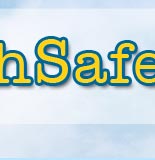 |
 |
 |
 |
 |
 |
|||||||||
Join our mailing list and receive updates about our activities. |
|
Peer Warning Program A Peer Warning Program is designed to address barriers to action and attempt to prevent a tragic event from occurring. Peer Warning should not be confused with the use of profiling in the school. Profiling incorporates the idea that schools can assemble a “list of characteristics” to identify individuals with potential for violence and intercede with them before violent acts occur. Reports by numerous agencies, including the FBI, the United States Secret Service and the Department of Education have concluded that profiling is not a legitimate strategy for identifying potentially violent students or preventing school violence. (Cornell et al., 2004). However, an effective Peer Warning Program provides students with a problem-solving strategy that allows them to manage their knowledge of an actual or presumed threat in a safe manner that does not stigmatize the student. Indeed, emerging research (Cornell et al., 2004) indicates that the “threat assessment” model, of which peer warning is an essential component, shows promise in the effort to prevent violent incidents in the school. Cornell, D.G., Shera, P.L., Kaplan, S., McConnville, D., Douglas,J., Elkon, A., McKnight,L., Branson, C., & Cole, K. (2004). Guidelines for student threat assessment: Field-test findings. School Psychology Review, 33, 527-546. Click here to See and Download Chart: Report to an Adult Assessment Process The teaching of a decisional flow-chart can be incorporated as part of a group discussion with students about maintaining safety in schools. The school shootings in Columbine and at other schools underscore the need for educators to take a proactive stance with regard to violence prevention. Implementing a Peer Warning Program provides a vital resource. The American Psychological Association, in association with MTV, has created a 30 minute Warning Signs Video (Peterson & Newman, 2000). In this video, the youth learn about the nature of violent incidents as discussed by perpetrators, their friends and witnesses. They also learn about the warning signs and what could have been done to prevent violent acts. To request this material, e-mail PracPR@apa.org Facilitators at middle and high schools can use the material provided by the Warning Signs Initiative in the form of a:
|

This web site has been produced by The Melissa Institute for Violence Prevention and Treatment to provide research-based school violence prevention procedures for educators. The web site has been made possible with the generous support of the Robert and Renee Belfer Foundation and other supporters. |
 |
The Melissa Institute for Violence Prevention and Treatment to provide research-based school violence prevention procedures for educators Terms and Conditions |
|